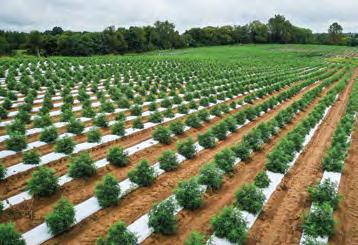
2 minute read
HEMP GETS HOT
HEMP GETS HOT Meet the Hardest Working Plant on the Planet
They can be eaten, ground into flour or pressed for oil that is used for cooking or in body care products. The stems undergo decortication to separate the long outer fibers (bast) from the short inner fibers (hurd). Hemp hurd makes extremely durable hempcrete for construction, absorbent and dust-free animal bedding or pellets for heating stoves. An exponential rise in the use of hemp is expected because it can replace products made from paper, wood, plastic, cotton and fossil fuels.
“Hemp fiber is going to dominate the market once we get to the full manufacturing potential,” says Erica Stark, executive director of the National Hemp Association, in Washington, D.C.
The first introductions consumers can expect include hemp paper products, such as plates and toilet paper, and biodegradable hemp bioplastics like cutlery and cups. Construction materials and other products are expected to quickly follow.
by Julie Peterson A crop that was illegal in U.S. soil for more than half a century is now reaching for the sun. Industrial hemp, the low- or no-THC cousin to marijuana, has created high hopes among farmers, agricultural researchers, manufacturers and consumers. By 2019, America had become the world’s third-largest producer, behind Canada and China, where it’s been cultivated for 8,500 years.
“It’s the fastest-growing ag industry that we’ve ever seen,” says Tara Valentine, hemp specialist at the Rodale Institute, in Kutztown, Pennsylvania. Since hemp’s inclusion in the 2018 Farm Bill, Rodale’s hemp web page hits have grown 10-fold. Better Products All parts of the hemp plant are useful in multiple ways, and hemp has applications in textiles, construction, bioremediation, technology, nutrition and health, including cannabidiol (CBD). The seeds are rich in protein, essential fatty acids and vitamins. Right now, it’s the Wild West of agriculture. ~Dustin Enge
info@ihwa-nj.com a (844) 5HEALER (844)-543-2537 Where Ancient Wisdom Meets Modern Medicine Minal Vazirani, M.D., DABIM, DABP, DABOIM a Internal Medicine a Pediatrics a Integrative, Holistic, Ayurvedic & Functional Medicine Combining conventional and integrative medical theory and practice to offer patients an innovative, comprehensive, holistic, and progressive custom-tailored approach to optimize health. Triple Board Certified MD Root Cause Functional Medicine Approach
DrVazirani 112 Town Center Dr, Warren a 200 S Orange Ave, Ste 107, Livingston MinalVaziraniMD.com
Environmentally Friendly The Institute of Papermaking and Printing, at the Technical University of Lodz, Poland, did a 2015 study comparing making paper from wood to making it from hemp. Among the findings: hemp takes four months to grow, while trees need 20 to 80 years. An acre of hemp can produce four or more times as much paper as an acre of trees. Hemp paper doesn’t need toxic bleaching and can be recycled twice as many times. Other studies concur.
Paper without deforestation would be a major benefit, but it’s a minor job on hemp’s profound résumé. “Hemp needs to be a part of every climate change conversation, not only because it sequesters huge amounts of carbon during cultivation, but also because construction products made out of hemp will continue to sequester carbon for up to 100 years,” says Stark. Hemp could also help save the depleted soil on U.S. farmland that has been destroyed by tilling and synthetic fertilizers. “We have to rebuild the soil by putting carbon back in and increasing organic matter,” says Valentine. Hemp does this with a massive root biomass that breaks up compacted soils, improves water








